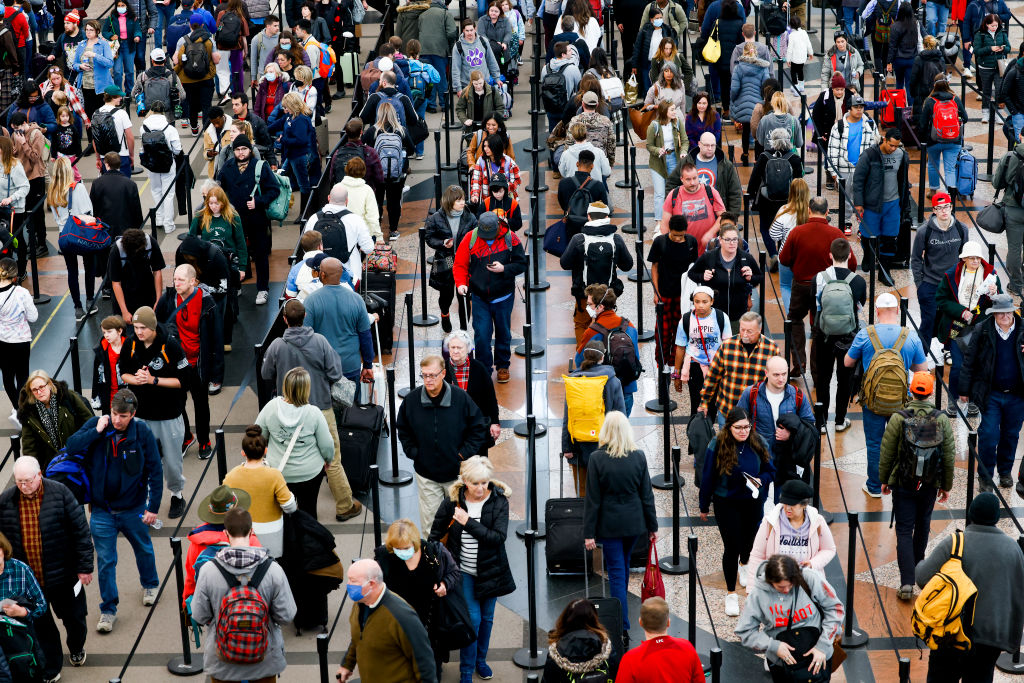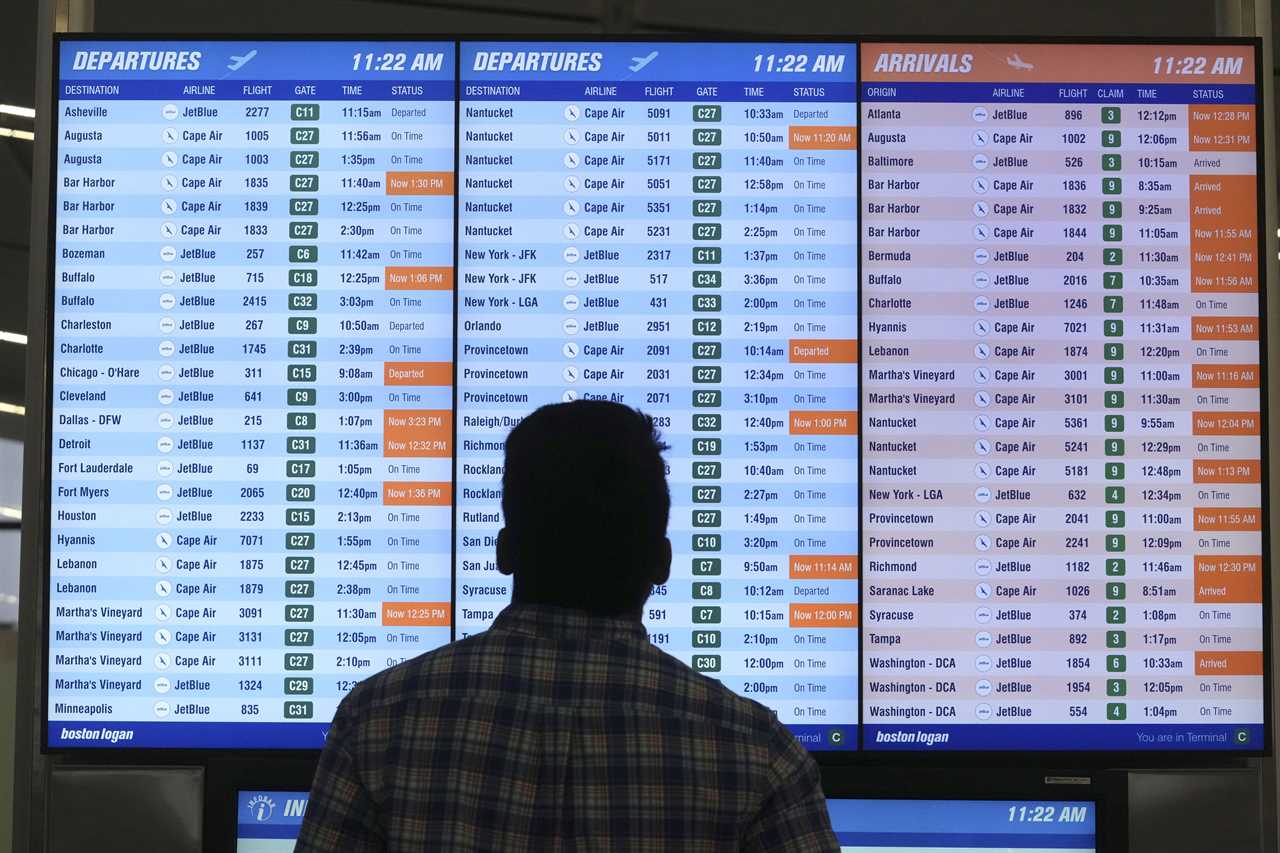
This holiday season, if you find yourself running what feels like miles through an airport, amid frustrated crowds of delayed passengers, in hopes of making your connection on time, you could curse the airline that sold you the ticket.
But the real culprit is the Congress that deregulated air travel back in 1978.
That decision was famously regretted by West Virginia Sen. Robert Byrd: “I admit my error; I confess my unwisdom, and I am truly sorry.” But we don’t have to suffer the lingering problems that deregulation has wrought forever. The rise of big airport hubs that make connections so stressful, the decline in service to many communities around the country, and the related geographic inequality that troubles our economy and our politics are all a function of policy failures — and policymakers can fix them.
To understand the connection between air travel and geographic inequality, a little history is in order.
From the 1930s to the 1970s, the federal government regulated airlines in line with public utility principles. Policymakers believed that airlines were an essential part of transportation infrastructure and that the United States needed reliable, stable service all across the country. But they also recognized that the whole country would not be served by unrestricted market competition. Some areas — smaller and mid-sized cities — are more expensive to serve because fewer people fly there. In a competitive market, those areas would either be abandoned because they are high-cost and low-profit, or prices would be prohibitively high.
As a result, they designed a system of regulated competition, in which the Civil Aeronautics Board would allocate routes so airlines would get to serve some high volume, profitable routes, and also some less profitable routes to smaller markets. The CAB also regulated prices, eventually setting prices at a level that would ensure a reasonable return for the airline and charge consumers by the distance flown. This system ensured access everywhere while ensuring a measure of competition in the system as a whole. The CAB also wouldn’t let a small number of airlines get too powerful in any one market or overall.

Policymakers abolished this system in 1978 in response to growing academic criticisms of regulated competition. The opponents of the old system argued that air travel was like selling sofas or coffee mugs, not like a utility, and that airlines should be able to fly anywhere they want and charge whatever they want. At first, this approach seemed like a success. New entrants appeared, offering cheap “no frills” (and non-union) flights in high-volume markets. But the big airlines fought back, and they eventually pushed out the upstarts by matching or dropping their prices, only to then raise their prices after winning the price war. By the end of the 1980s, after many mergers and bankruptcies, the airline industry had reconsolidated with the same handful of big airlines dominating the market.
What Sen. Byrd observed in those years was that while the new entrants came to places like New York City, after deregulation “many of the airlines pulled out quickly” from West Virginia and other states with lower volumes, sending prices “into the stratosphere.” Former Tennessee Senator Jim Sasser concurred, noting that many in the House and the Senate reversed their support for deregulation because air service was “declining precipitously” in their states.
The biggest airlines also shifted in the 1980s from a point-to-point model, with lots of nonstop flights between cities, to a hub-and-spokes model, in which connections through a big “fortress hub” became the norm. This development helped some smaller markets (a connection to a hub opens up flights to dozens of places), but it also hurt mid-sized cities and their regions. With the rise of fortress hubs, cities like St. Louis and Cincinnati first saw competition decline. The biggest airline in St. Louis, TWA, went from a 39 percent share of the airport in 1977 to a whopping 82 percent by 1987. In Cincinnati, Delta went from 35 percent control to 68 percent. Over time, as airlines continued their merger sprees and wanted even more benefits from scale, St. Louis and Cincinnati lost their hubs altogether.
Economists often observe that some cities are “superstars” and some regions thrive because of “agglomeration effects.” This is the idea that there’s a virtuous cycle of attracting people in a single sector to a single place (like tech in Silicon Valley). Others have recently pointed out that infrastructure spending is a critical driver of the quality of these services. While both stories are true to some extent, these explanations ignore the federal government’s regulatory choices, particularly ones like airline deregulation that have had a significant effect on access to basic transportation services. As one former airline executive wrote during the debates over deregulation in the 1980s, “the ability of a city to retain existing industries, and attract new ones, is uniquely dependent on the adequacy, convenience, and reasonable pricing of its airline service.” Regulation and deregulation, not just “agglomeration” and federal spending, have shaped the availability of air service.
In recent years, cities all around the country have again seen service decline. Since the pandemic, American, Delta and United have dropped 74 cities from service, including places like Duluth, Minnesota; Lincoln, Nebraska; Flint, Michigan; and Pierre, South Dakota. Some cities, like Dubuque, Iowa, and Toledo, Ohio, have lost all major carrier service. Under regulation in the 1970s, Toledo had service from five carriers, with United alone offering eleven daily flights to seven different cities.
The Essential Air Service program, which offers subsidies to ensure that very small cities have access to air transportation, was designed to address some of these challenges, but it is insufficient. Members of Congress routinely try to cut its funding and limit its scope. And in any case, it only applies to the smallest cities—places like Cody, Wyoming (pop. 10,000)—but not to slightly larger cities, like the state capital Cheyenne (pop. 65,000). Cheyenne, which has also lost major carrier service on-and-off over the last decade, has had to promise to pay an airline if it doesn’t hit a revenue target.
Reversing the geographic concentration in the airline industry doesn’t necessarily mean returning to the regulated system of the 1970s. But there are ways to adopt some policies that treat air travel a bit more like a transportation utility that would address geographic access and airport concentration.
For instance, policymakers could limit the size of “fortress hubs,” to both expand competition within hubs and encourage more hubs rather than ever-bigger hubs. They could adopt an NFL-style draft-pick system by which the biggest airlines are required to choose smaller cities from a list and serve them with affordable, regulated prices. Or alternatively, they could allow open competition between the biggest cities but set up a utility-like service for smaller cities to connect to regional hubs. Such changes would also improve the resilience in the system, so that when high winds or a storm hits an airport, cancellations don’t cascade as significantly through the whole country.
Expanding access to air travel and reversing decades of widening geographic inequality is something policymakers from both parties should be able to agree upon, including Democrats from mid-sized cities and Republicans from rural states. If they can build a strange-bedfellows, cross-partisan coalition, they’ll have a chance to help economic growth in their home states — and avoid future regrets and apologies.
----------------------------------------
By: Ganesh Sitaraman
Title: Washington Ruined Airline Travel. Here’s How to Fix It Now.
Sourced From: www.politico.com/news/magazine/2023/11/14/airline-travel-washington-regulation-00126892
Published Date: Tue, 14 Nov 2023 05:00:00 EST






